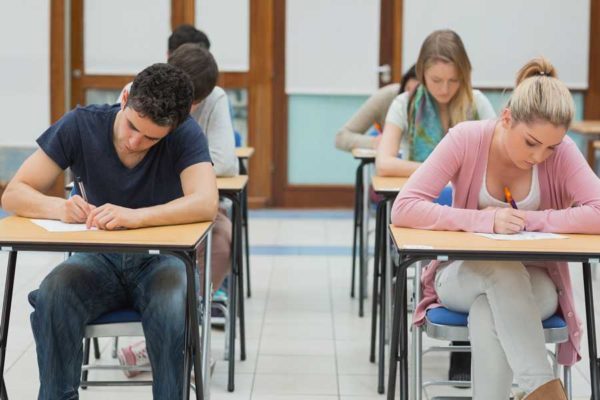Much-anticipated bill attempts to satisfy all stakeholder groups as it moves away from NCLB mandates
 While a “new and improved” version of the hotly-debated No Child Left Behind Act (NCLB) would still require reading and math testing in grades 3-8 and once in high school, states would have much more leeway when it comes to defining teaching and learning objectives and outlining accountability measures.
While a “new and improved” version of the hotly-debated No Child Left Behind Act (NCLB) would still require reading and math testing in grades 3-8 and once in high school, states would have much more leeway when it comes to defining teaching and learning objectives and outlining accountability measures.
The Every Student Succeeds Act gives states the power to determine their own academic goals and measure progress toward those goals–a departure from NCLB, which aimed for 100 percent math and reading proficiency by 2014.
States or districts will be in charge of determining how to improve persistently underperforming schools. Previously, NCLB gave the federal government a strong voice in what happened to those schools. Now, under Every Student Succeeds, schools requiring much intervention would be among the lowest-performing 5 percent in the state.
Every Student Succeeds also prohibits the U.S. Department of Education from providing incentives for participation in the Common Core State Standards.
Reaction to the bill came quickly, with critics worrying that states will have too much leeway and too little accountability. Supporters’ statements echoed the sentiment that a change has been a long time coming.
Education technology stakeholders and advocacy groups applauded the legislation’s mention of technology and digital learning.
“ESEA has been in need of revision for many years, as the education landscape has evolved dramatically since it was last updated 15 years ago,” said Mark MacCarthy, SIIA senior vice president of public policy, in a statement.
“This legislation represents a renewed, long-awaited commitment to digital equity. It will strengthen the technology competencies of educators, including their data privacy know-how, and give more students the tools needed for success in college and career preparation,” CoSN CEO Keith Krueger said.
“Far too many educators lack the 21st century training to enhance teaching and learning through technology. Innovations and educational practices have simply outpaced federal law and investment, leaving poor communities behind the digital curve.”
The National Governors Association issued a full endorsement of the bill–a move it has not taken in almost 20 years.
“This is a significant step in the right direction in our work to ensure state control of education policy. This bill reinforces that accountability and responsibility for K-12 education rests with the states,” said NGA Chair Utah Gov. Gary R. Herbert in a statement.
In a joint statement, American Association of School Librarians (AASL) President Leslie Preddy and American Library Association (ALA) President Sari Feldman expressed their appreciation that the legislation recognizes the role school libraries play in students’ success.
“School libraries are learning hubs where students become motivated readers and actively engage with technologies and the latest information resources, preparing them to succeed in our global, competitive economy and the ever-evolving workplace. School librarians are instructional leaders and essential partners with all teachers, collaborating to meet diverse needs, strengthen student learning, and facilitate deeper understanding of print and digital materials,” they said.
“Students have suffered long enough under the broken system of test and punish created by the No Child Left Behind Act,” NEA President Lily Eskelsen García said.
“In particular, the bill includes student and school supports in state accountability plans to create an opportunity ‘dashboard’; reduces the amount of standardized testing in schools and decouples high-stakes decision making and statewide standardized tests; and ensures that educators’ voices are part of decision making at the federal, state and local levels.”
A final version of the bill was released on Nov. 30. Congress is expected to vote on the bill in the coming weeks, and President Obama is likely to sign it by the end of the year.
- New group targets AI skills in education and the workforce - May 6, 2024
- Friday 5: Teacher stress - May 3, 2024
- Student success is impacted by issues outside of school, survey finds - May 1, 2024

